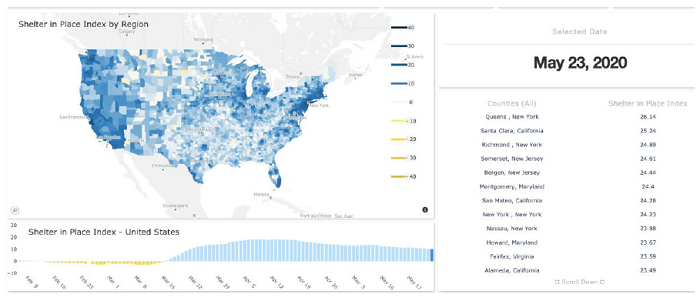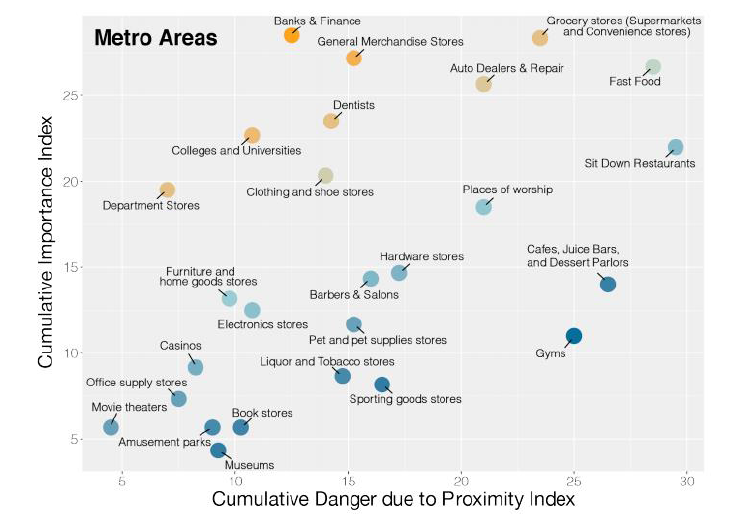Data scientists in academia, non-profits, and the government have come together to track and respond to the economic & humanitarian impacts of the coronavirus. Put together by our friends over at SafeGraph, here are three ways data scientists are fighting COVID-19.
Playing a key role in the fight against the COVID-19 health crisis, data scientists have been working to expand the scope of their analyses to encapsulate foot traffic data, social distancing metrics, and various other forms of recently gathered data relevant to the pandemic. As such, big data is continually enabling the development of groundbreaking research and policymaking derived from concrete, data-driven insights, helping mitigate the adverse impacts of the pandemic.
Namely, data scientists are using their knowledge and skills to combat COVID-19 through the following key mechanisms:
1. CDC Data Scientists are Creating Data-Driven Healthcare Responses
Data scientists at the CDC are actively creating data-driven healthcare responses. A key stakeholder in the fight against COVID-19 is the Centers for Disease Control and Prevention (CDC), an agency whose decision-making ability has been greatly enhanced with data. To better understand where COVID-19 has the potential to spread the most, the CDC has been analyzing foot traffic to businesses as a means of identifying whether or not social distancing measures are being respected at the neighborhood level. Datasets and dashboards to help visualize social distancing metrics have been instrumental in tracking the impacts of re-opening the economy and shaping public policy accordingly.

2. Data Scientists in Academia Are Researching Into Society’s Toughest Socio-economic Questions Around COVID-19
Data scientists at various academic institutions have been utilizing data to better understand the spread of COVID-19 and the role that various factors like stay-at-home orders, geographic proximity, and political affiliation play in shaping the global response to this pandemic. In “Rationing Social Contact During the COVID-19 Pandemic: Transmission Risk and Social Benefits of US Locations,” researchers from the MIT Sloan School of Management sought to understand why decisions were being made to either re-open some businesses more quickly than others or make an assessment as to what constitutes a more “at-risk” businesses given the spread of the novel coronavirus.

To assess various levels of risk, the researchers combined SafeGraph Patterns data with SafeGraph Polygons (building footprints for Points-of-Interest) to get a better sense of how total visits, total unique visitors, and “dwell time”—in other words, how long more than one person lingers in the same location for a prolonged period of time—factor into the relative risk of any given POI. Knowing this, one of the most eye-opening parts of this research is how it creates a unique way to pit relative “risk” against relative “importance” across 26 business categories, as outlined below.
3. Local & Federal Governments Lean on Data Scientists For Driving Policy
Data scientists in local and federal government agencies have found data to be invaluable in helping officials tailor their response efforts. With reliable data, governments were able to intervene quickly to impede the spread of the virus and mitigate the subsequent toll on public healthcare systems:
“I’m proud L.A. not only stepped up the quickest in the country but also the most extensively,” said Los Angeles Mayor, Eric Garcetti. “I nervously looked at how many people would do this. I looked at the messaging. I looked at the data, which has guided us this whole time. I looked at cell phone data and apps movement that people got to me. We earned an A, best in the country. We were the biggest reduction of movement of the counties in Southern California and tied for the best in the state, so we did everything we could with the knowledge we had as quickly as we could…”
Now that states are beginning to reopen their economies, this data will become increasingly useful to inform officials on the impacts of reopening, so they can regulate the reopening process and determine the most effective policies moving forward.
What’s happening in the world today is unprecedented for everyone. Each and every day, people across the country are doing their best to not only cope with the COVID-19 crisis but to figure out real—and speedy—solutions for overcoming the health and economic risks that novel coronavirus pandemic has brought to the U.S. and the world.
That being said, the path towards a safe re-opening of the U.S. economy comes down to the data. By looking at where consumers may be exposed to the greatest risk while also being cognizant of which businesses are potentially the most important, relatively speaking, for keeping consumers alive and well in the here and now, we can begin the first steps towards getting the U.S. economy back on track again without plunging ourselves further into this crisis.
Sign up for the free insideBIGDATA newsletter.





Speak Your Mind